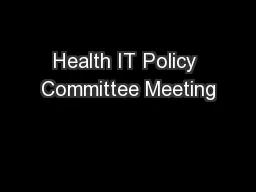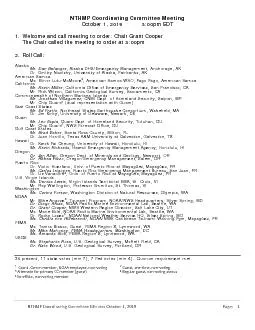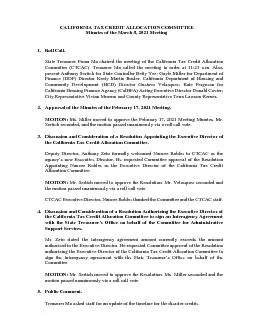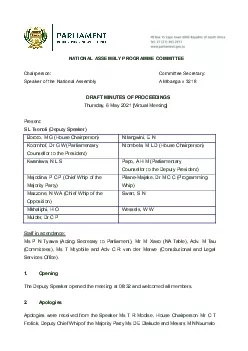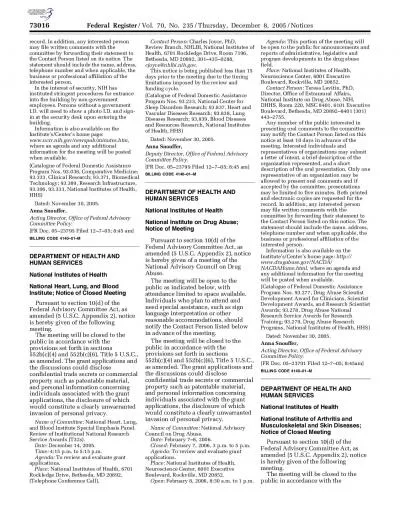PPT-Health IT Policy Committee Meeting
Author : mitsue-stanley | Published Date : 2018-10-13
July 9 2013 Data Analytics Update Data Analytics Update Items Recent results from 2 national surveys of physicians and hospitals Trends in adoption of EHRs and
Presentation Embed Code
Download Presentation
Download Presentation The PPT/PDF document "Health IT Policy Committee Meeting" is the property of its rightful owner. Permission is granted to download and print the materials on this website for personal, non-commercial use only, and to display it on your personal computer provided you do not modify the materials and that you retain all copyright notices contained in the materials. By downloading content from our website, you accept the terms of this agreement.
Health IT Policy Committee Meeting: Transcript
Download Rules Of Document
"Health IT Policy Committee Meeting"The content belongs to its owner. You may download and print it for personal use, without modification, and keep all copyright notices. By downloading, you agree to these terms.
Related Documents

